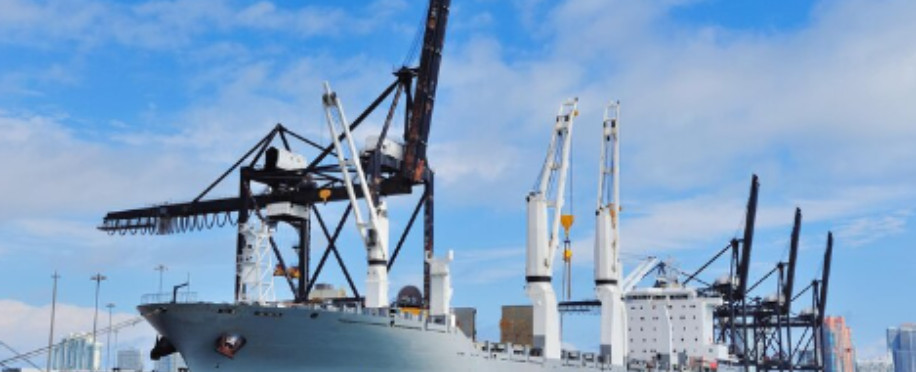Copyright © 2025 lmitac.com All Rights Reserved. Contact - Terms and Conditions - Privacy Policy - Quality Policy - Become an instructor - Vacancies - Sitemap
London Maritime Academy is a trade name for London Premier Groupversion: 2.9.0
London Maritime Academy is a trade name for London Premier Group

Posted on : 3/25/2024, 7:40:03 PM
Ships coming in and ships coming out, accidents are expected to happen, aren't they? However, there comes a new solution, with vessel traffic management, the maritime industry will no longer suffer to maintain an accident-free port.
How does that happen? What does vessel traffic management include? All these questions and more will be answered in this article, so read along.
Think of a very crowded crossroad, 8 different road directions, cars speeding everywhere, in total chaos. Now you can imagine how many accidents a day would happen in such an environment right?
Luckily, we've developed a traffic system of lights to organise this process. This is the equivalent of a Vessel traffic management system. Vessel Traffic Management, or VTM, is a set of comprehensive systems aimed at decreasing the risks and increasing the efficiencies of vessel movement at marine ports.
Simply said, it’s the technologies, procedures, and communication networks that allow us to control the navigation of vessels till they safely reach the shore. These systems have been designed to lower the risk of ship collision, assist navigation safety, and evenly distribute vessel traffic in waterways.
But why? What is the reason behind all this?
The purpose of this system is to provide port operators with a systemized way of managing ships, especially in busy periods. But it has a much better purpose than that, here's a glimpse of what it's made for:
Collision and grounding prevention through active monitoring and communication with vessels in the surrounding area.
Enhancing the navigational safety and efficiency of vessels by disseminating information, guidance, and traffic clearances.
Conservation of the marine environment through acting on offshore incidents or pollution crises.
Integrating marine security operations and monitoring of the maritime secure systems.
We can safely say that vessel traffic management is an umbrella term, it includes many analysis systems, modern software, and more. One of these components of VTM is VTS. Here are 3 the vessel traffic services that are integrated into vessel traffic management systems VTMS:
Information Service: This type of VTS essentially functions as the vessel's sea traffic control system, providing vessels with crucial information on navigational safety, such as weather conditions, tide data, and information about hazards or obstacles within the area. Through this service, ships monitor their navigation choices such as their paths and speeds.
Traffic Organization Service: These services are systems that are in charge of traffic at the port area. It designates lanes of traffic, defined routes, and separation of traffic flows and thus enables vessels to progress in line and collision-free.
Navigational Assistance Service (NAS): This service provides the vessel with navigational advice and recommendations. VTS operators are in charge of observing the movement of the vessels and providing accurate information to guide the vessels away from a hazard or congested area.

The functions of Vessel Traffic Services are diverse and crucial for ensuring safe and efficient navigation across harbors. Some of the key functions include:
Surveillance: VTS uses radar, AIS, and other sensor devices for example for tracking the movement of vessels in real-time. This surveillance mechanism gives operators the ability to not only identify but also respond to potential risks on time.
Safe navigation assistance: VTS operators give vessels needed data and suggestions to facilitate their safe trips through restricted areas.
Traffic organization: VTS enables proper management of vessel routing through the development of traffic separation schemes, implementation of carbon intensity indicator regulations that prevent collisions, and effective management of congestion.
Incident management: VTS ensures the order and a smooth ride within their area of responsibility by acting on and putting an end to any incidents or emergency issues that arise at the same time. They interact with the competent authorities, send response units, and notify all vessels in the area, in case such incidents occur.
The Vessel Traffic Management Plan (VTMP) is a key feature of the Vessel Traffic Management system (VTM). The transport plan includes the management of movements, tools, procedures, and regulatory mechanisms to effectively manage vessel traffic in a given coastal area. It incorporates the traffic organization, communication rules, emergency response plans, and any particular requirements or restrictions that vessels might have to obey.
These vessel traffic management systems are usually prepared in conjunction with stakeholders which could be maritime authorities, port operators, and vessel operators and thus, it is done with a desire to involve all these agents in the development of a functional and participatory approach to the management of vessel traffic.
Do you aspire to know the new trends in the global vessel traffic management market? Perhaps you'd like to know more about the new generation of Enhanced Vessel Traffic Management System (EVTMS)? There's a wide range of knowledge about systems and solutions you can reach through these advanced courses, so if your intent is to improve your operational excellence, enhance your traffic systems, and ensure you're having no accidents in your port, an international maritime business course is the one for you.
Vessel Traffic Management is a vital system that ensures safe and efficient navigation in marine environments. That’s why you should implement it in your port management plan today.